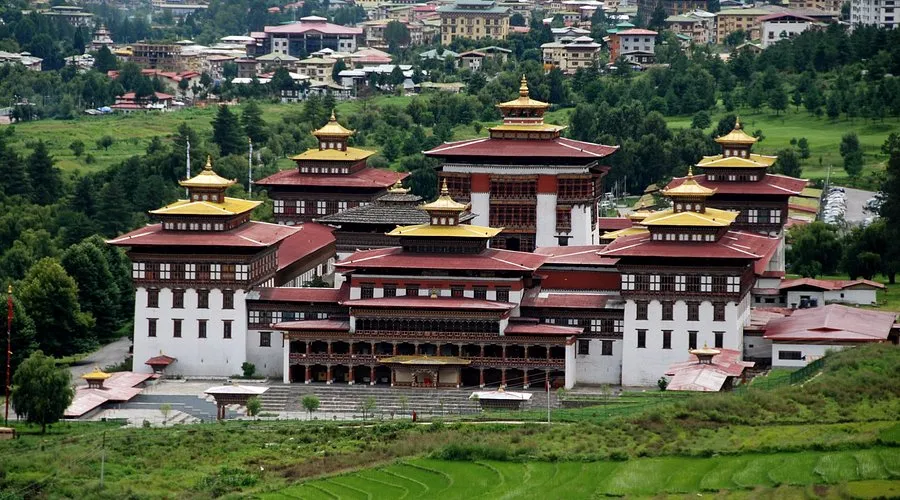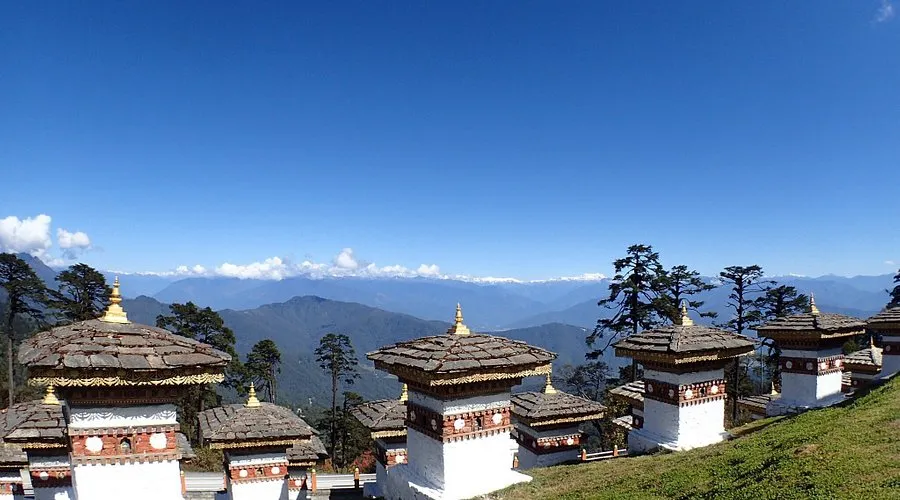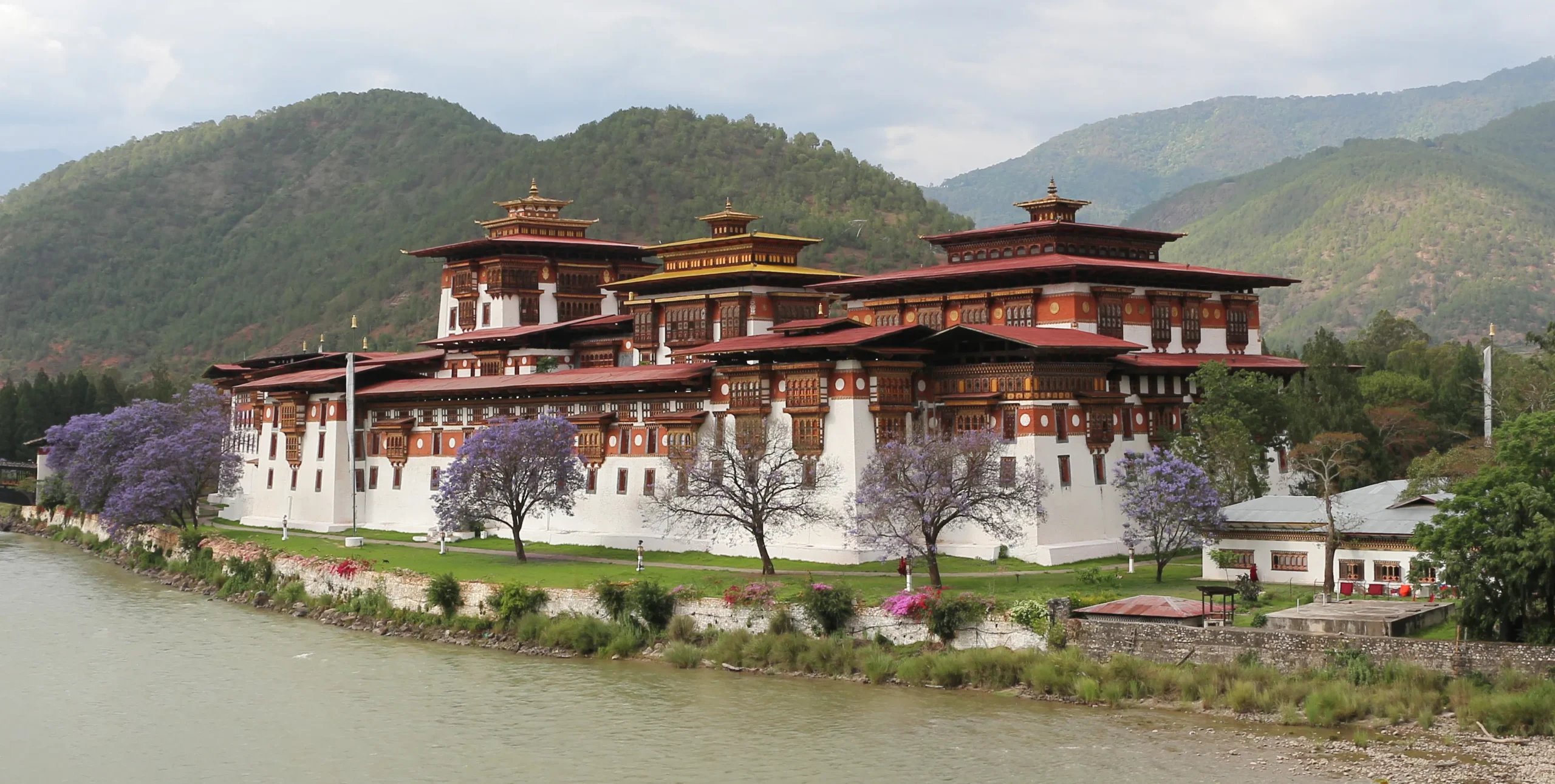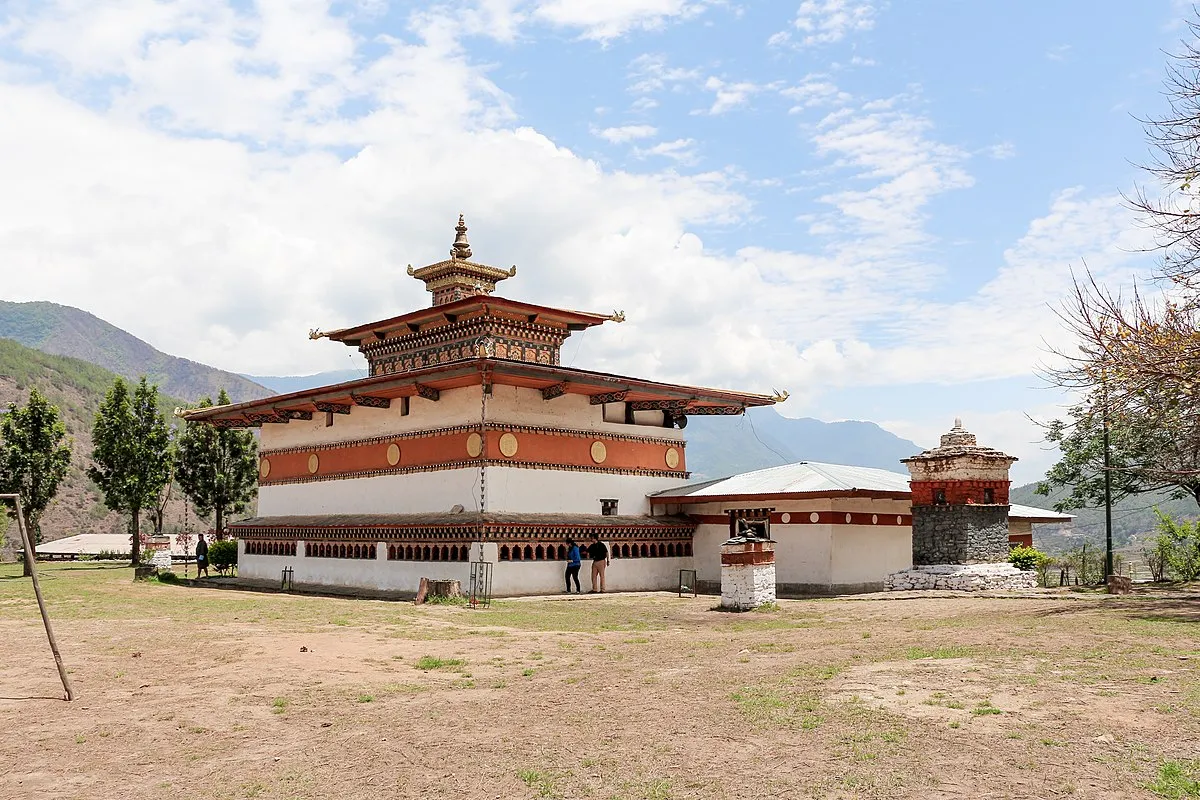1. Overview
Tashichho Dzong, meaning “Fortress of the Glorious Religion,” is a grand Buddhist monastery and fortress located on the western banks of the Wang Chhu River in Thimphu, Bhutan. This architectural marvel serves as the seat of Bhutan’s government and houses the throne room, secretariat, and offices of the King. It also functions as the summer residence of the Je Khenpo, Bhutan’s chief abbot. With its golden rooftops, whitewashed walls, and serene gardens, Tashichho Dzong is a symbol of Bhutan’s spiritual and administrative harmony.
Location – Google Maps Link
2. History
- Originally built in 1216 by Lama Gyalwa Lhanangpa
- Taken over and reconsecrated by Zhabdrung Ngawang Namgyal in 1641
- Rebuilt multiple times due to fire and earthquake damage
- The current structure was reconstructed by King Jigme Dorji Wangchuck in the 1960s
- Became the administrative center of the government in 1952
- Houses over 30 temples, chapels, and shrines
- Venue for the annual Thimphu Tshechu, one of Bhutan’s major festivals
- Summer residence of the Je Khenpo and the monastic body
- Features traditional Bhutanese architecture with gold-plated spires
- Surrounded by beautifully manicured gardens and lawns
3. What Makes Tashichho Dzong Popular?
Tashichho Dzong is popular for its dual role as both a religious and political hub of Bhutan. Its spiritual importance, stunning design, and central role in state functions make it a major attraction for locals and tourists alike. Visitors come to admire its majestic presence, attend the Thimphu Tshechu festival, and gain insight into Bhutan’s unique fusion of governance and faith.
4. Overall Ratings (1 to 5 Stars)
Overall Rating: ⭐⭐⭐⭐⭐ (5/5)
Historical Significance: ⭐⭐⭐⭐⭐ (5/5)
Scenic Beauty: ⭐⭐⭐⭐⭐ (5/5)
Cultural Experience: ⭐⭐⭐⭐⭐ (5/5)
Accessibility: ⭐⭐⭐⭐☆ (4/5)
5. Weather
Best Time to Visit: March to May and September to November
Temperature Range: 10°C to 25°C
These seasons offer clear skies, mild weather, and an ideal atmosphere for sightseeing.
6. Nearest Five Hotels
- Taj Tashi Bhutan – Luxury hotel with Bhutanese design and fine dining
- Le Méridien Thimphu – Contemporary hotel in central Thimphu
- Hotel Osel – Comfortable stay with valley views
- Norkhil Boutique Hotel & Spa – Elegant, wellness-focused lodging
- Hotel Druk – Classic city hotel with heritage decor
7. Timings
Weekdays: 5:30 PM – 6:30 PM
Weekends & Public Holidays: 9:00 AM – 5:00 PM
Note: Entry is only allowed after office hours on weekdays
8. Time Required to Visit
Visit Duration: 1 to 2 hours
Time enough to explore the exterior grounds, main temple, and surrounding gardens
9. Entry Fees & Ticket Booking Details
Entry Fee: Nu. 1,000 for international tourists
Booking: No prior booking required; pay at the entrance
10. Things to See & Do
- View the golden-roofed dzong and its intricate woodwork
- Explore the inner courtyards and admire Buddhist statues
- Visit during Thimphu Tshechu for mask dances and rituals
- Observe the beautiful surrounding gardens
- Learn about Bhutan’s unique blend of politics and religion
11. Best Time to Visit
Season: Spring (March–May) and Autumn (September–November)
Time of Day: Late afternoon on weekdays or mornings on weekends
Day of Week: Weekends offer broader access and fewer restrictions
12. Nearest Parking Spots
- On-site parking available
- Street parking nearby for cars and taxis
- Tour buses drop off at the designated entrance
13. Tips for Visitors
- Dress modestly (long sleeves and pants are preferred)
- Photography is not allowed inside temples—check with staff
- Visit during the Thimphu Tshechu for a cultural experience
- Respect monastic customs and follow guided paths
- Arrive early, especially during festivals, to avoid crowds
14. How to Reach the Place
By Car: 10–15 minutes from central Thimphu
By Taxi: Easily accessible with local cabs
By Tour: Included in most Thimphu sightseeing packages
15. Nearby Attractions to Combine for the Visit
- National Memorial Chorten – A place for prayer and reflection
- Royal Textile Academy – Learn about Bhutanese weaving traditions
- Folk Heritage Museum – Explore traditional Bhutanese village life
- Buddha Dordenma – Giant seated Buddha overlooking Thimphu
- Centenary Farmers Market – Ideal for local crafts and snacks



